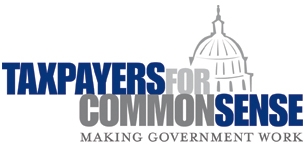In September, the Department of Energy (DOE) published a Draft Advanced Nuclear Energy Loan Guarantee Solicitation. If finalized, the solicitation would make $12.6 billion in loan guarantees available to a wide range of nuclear energy projects. The size and specifics of the draft solicitation would create the possibility for huge taxpayer losses.
To prevent waste and avoid unnecessary liabilities, TCS submitted comments at the end of the 30-day public comment period highlighting a number of concerns with the draft. Among other problems, TCS noted:
- The underlining structure of the loan guarantee program remains unsound;
- Problems with the program identified by the Government Accountability Office and others have not been fully addressed;
- DOE has a poor history of choosing nuclear energy projects to support;
- The credit subsidy cost of previous loan guarantees was miscalculated;
- The draft reduces the importance of applicants' creditworthiness in the review process;
- The draft could indirectly pressure the Nuclear Regulatory Agency's licensing process;
- Small Modular Reactors are unsuitable for taxpayer support;
- The current economic climate makes support of front-end nuclear projects highly speculative; and,
- The program continues to suffer from an endemic lack of transparency.
See our full comments below, or download them here.
November 3, 2014 Re: Taxpayers for Common Sense Comments on Department of Energy’s Draft Solicitation for Advanced Nuclear Energy Projects
Dear Mr. Davidson, Thank you for the opportunity to comment on the draft solicitation for advanced nuclear energy projects under the Title XVII Department of Energy Loan Guarantee Program. Taxpayers for Common Sense (TCS) is a non-partisan budget watchdog serving as an independent voice for American taxpayers. For more than a decade, TCS has worked to achieve a government that spends taxpayer dollars responsibly and operates within its means. The Title XVII program goal is to provide federally backed loan guarantees as a vehicle to fund private enterprise. Because these types of loans mask the true cost of certain projects and create future financial liabilities for taxpayers, it is imperative that any loan guarantee program proceed with extreme caution. Specifically, TCS is concerned that the structure of Title XVII will lead to additional defaults and taxpayer losses, if it proceeds without significant reform. The characteristics of the draft solicitation for Advanced Nuclear Energy Projects are also cause for concern. The nuclear industry’s history of failures, its inherent riskiness, and its capital intensive nature make it unsuitable for taxpayers to support. The decreased weight given to applicants’ creditworthiness during the evaluation process compared to previous solicitations makes the draft even more disconcerting. TCS also believes that the types of projects identified by the draft solicitation, such as small modular reactor development and front-end nuclear activities, are subject to severe economic pressures that make them necessarily risky propositions and thereby poor choices for public support. These and other issues with the draft solicitation compound the risk. Due to the unresolved structural problems with the loan guarantee program, and the aspects of the draft that expose taxpayer to greater risk, TCS strongly urges the Department of Energy (DOE) to withdraw the draft solicitation for Advanced Nuclear Energy Projects and make substantial reforms to the Title XVII program before issuing any further solicitations. Structural Problems with the Loan Guarantee Program First and foremost, the regulations created to implement Title XVII of the Energy Policy Act of 2005[1] have hampered the Department of Energy’s ability to recoup any future losses sustained by the program, and therefore make each loan guarantee the program issues unduly risky. When DOE reinterpreted the legal meaning and intent of Section 1702 (d) and 1702 (g) in 2009,[2] it seriously undermined its standing as first lien holder to project assets. This is especially problematic given the loans guaranteed by DOE provide the vast majority of a project’s debt – up to 80 percent of a project’s total cost. Over the course of the Title XVII program’s history, a number of problems with its structure and administration have been identified by independent investigators. The Government Accountability Office (GAO) has noted, for example, that the program’s aim to support innovative technologies often with unique characteristics makes it very difficult to calculate projects’ risks and the associated cost of issuing loan guarantees. It adds that the program will naturally tend to underestimate the cost of the loan guarantee to the government.[3] In several reports over the years, GAO has also pointed out the inconsistent treatment of applicants,[4] the inconsistent application of credit review protocols,[5] and the insufficiency of the program’s loan monitoring functions.[6] A recent report from DOE’s Office of Inspector General on the loan guarantee for Abound Solar Manufacturing found that the Loan Programs Office ignored the assessments of its own staff who described the project as “speculative.”[7] Abound Solar’s eventual bankruptcy should serve as a reminder of the program’s ability to create significant losses for taxpayers, especially when administered ineffectively. Until these issues and others identified by the GAO, OIG, and other investigations are fully addressed, and the overall structure of the loan guarantee program is reformed, DOE should refrain from proceeding with any solicitation.
Problems with the Loan Guarantee Program’s Previous Support of Nuclear Energy To date, the only loan guarantee finalized from the first nuclear solicitations is the department’s agreement to guarantee $6.5 billion in loans to Georgia Power Company and Oglethorpe Power Company for the construction of two new nuclear reactors at Plant Vogtle in Georgia.[8] The Plant Vogtle project is now at least 21 months behind schedule and $1.2 billion over budget.[9] Its setbacks have caused Standard and Poor’s, Moody’s, and Fitch Ratings to downgrade the credit rating of each of the project’s partners. The Vogtle project has proven that the capital intensive construction of nuclear reactors subjects taxpayers to an unacceptable amount of risk. Most troubling has been the program’s method for calculating the credit subsidy cost of the Vogtle loan guarantees. In April, documents obtained through a Freedom of Information Act (FOIA) request revealed that DOE determined the credit subsidy cost to be $0 for the loan guarantees issued for the Vogtle project.[10] A subsidy cost of $0 for a $6.5 billion loan guarantee violates applicable statute and undermines the public trust in DOE to adequately consider the risks associated with the program. The credit subsidy cost determination is also problematic because a prior FOIA request revealed that DOE had previously calculated the cost of the loan guarantee for Georgia Power at between $17-52 million and the cost for Oglethorpe’s guarantee at between $70-132 million.[11] How the calculation was changed over time to $0 is a mystery, and it highlights the lack of transparency that has been endemic to the program. DOE has also awarded a $2 billion loan guarantee to AREVA for its uranium enrichment facility at Eagle Rock, Idaho, but the four-year-old deal has yet to be finalized, raising more concerns about DOE’s ability to select nuclear projects for support.
Problems with the Draft Solicitation In addition to the significant structural problems with the loan guarantee program in general, and the program’s previous shortfalls, TCS is concerned about a number of the draft solicitation’s specifics. In both the 2008 solicitation for front-end nuclear facilities[12] and the 2008 solicitation for nuclear power facilities,[13] an applicant’s creditworthiness accounted for 50 percent of its overall eligibility. The current draft solicitation reduces the importance of an applicant’s credit to 45 percent. Given the inherent riskiness of the nuclear industry, the decreased importance of an applicants’ creditworthiness during the evaluation process compared to previous solicitations increases the risk for taxpayers. The draft solicitation also “does not prescribe any NRC licensing requirements as preconditions for project eligibility.”[14] Though it does stipulate that “[p]rior to the execution by DOE of a Loan Guarantee Agreement, the prospective borrower must have filed for, or have obtained any required regulatory approvals for the Project.” TCS believes these parameters of the solicitation could compromise the Nuclear Regulatory Commission (NRC) licensing process. In the event a project receives DOE loan guarantees before NRC licensure, the NRC would be indirectly pressured to approve the project’s license application. Even if the loan guarantee cannot actually be issued without an NRC license, having the issuance of a license as the only pending condition for finalization of the guarantee could still create undue pressure on the NRC to hasten its review process. TCS is also concerned with the technologies the draft has targeted for support, particularly small modular reactors (SMRs). SMRs are untested, unproven, unlicensed, and show little promise of ever becoming able of producing cost-competitive, commercially-viable electricity. Although the technology has been available in some form for decades, the economic viability of SMRs has never been sufficiently demonstrated. In fact, a 2011 study on the topic commissioned by DOE and conducted by the Energy Policy Institute at Chicago, showed that SMRs, even when used in a group of six, would struggle to compete against other sources of electricity.[15] A 2013 OECD Nuclear Energy Agency report came to the same conclusion.[16] Last year, DOE’s SMR Licensing Technical Support Program chose mPower, backed by Babcock & Wilcox (B&W), and NuScale, backed by Fluor Corporation, to receive up to $452 million in DOE support for the development of their SMR designs. Both parent corporations have since sought to divest from the projects. B&W failed to find an investor to buy some of its equity in mPower,[17] and announced in April that it would reduce its spending on the company substantially.[18] The more than $100 million DOE invested in the project is unrecoverable. Another industry leader, Westinghouse Electric Company, has also announced that they will be pulling back from SMRs, citing a lack of customers.[19] The industry’s reticence to further SMR technology and DOE’s wasted efforts on mPower should serve as warnings to DOE. The inclusion of front-end nuclear activities as eligible projects for the solicitation is also problematic. The low price of uranium on the international market and subsequent cost pressures on, particularly, uranium enrichment services have recently forced the United States Enrichment Corporation (USEC) into bankruptcy.[20] The economic climate for enrichment services has not changed substantially and any investment in the sector is highly speculative and unfounded. In addition, the failure of DOE to find any suitable projects to receive a loan guarantee through the 2008 front-end nuclear facilities solicitation raises the question of whether there is any legitimate need for DOE support in the sector. In addition, it is unclear how uprate and upgrade projects meet the Title XVII statutory requirements for loan guarantee eligibility. Further explanation is required to understand how projects would meet the requirements to avoid, reduce, or sequester greenhouse gas emission or qualify as innovative technology since they would be based at existing facilities with existing technologies.
Conclusion At a time when Congress and the federal government are functioning under strict fiscal limitations and working to control spending across the board, Taxpayers for Common Sense is concerned that offering an advanced nuclear energy solicitation could result in billions in federal losses. We urge DOE to withdraw the solicitation until it is demonstrated that taxpayers can be protected, as required under the original Title XVII statute. Thank you for taking our comments into consideration. If you have any questions, please contact me at (202) 546- 8500. Respectfully, [1] Energy Policy Act of 2005. P.L. 109–58. 119 STAT. 594 [2] Final Rule. “Loan Guarantees for Projects That Employ Innovative Technologies.” 10 CFR 609, dated 23 October 2007, as amended on 4 December 2009 and published in the Federal Register Vol. 74, No. 232. http://energy.gov/sites/prod/files/2014/03/f11/FR-1703-Dec4.pdf [3] Government Accountability Office. GAO-08-750. “New Loan Guarantee Program Should Complete Activities Necessary for Effective and Accountable Program Management.” July 2008. http://gao.gov/assets/280/277972.pdf [4] Government Accountability Office. GAO-10-627. “Further Actions Are Needed to Improve DOE’s Ability to Evaluate and Implement the Loan Guarantee Program.” July 2010. http://www.gao.gov/assets/310/306983.pdf [5] Government Accountability Office. GAO-12-157. “Further Actions Are Needed to Improve Tracking and Review of Applications.” March 2012. http://gao.gov/assets/590/589210.pdf [6] Government Accountability Office. GAO-14-367. “DOE Should Fully Develop Its Loan Monitoring Function and Evaluate Its Effectiveness.” May 2014. http://gao.gov/assets/670/662944.pdf [7] DOE Office of Inspector General. Audit Report: DOE/IG-0907. “The Department of Energy’s Loan Guarantee to Abound Solar Manufacturing, LLC.” 14 April 2014. http://energy.gov/ig/downloads/audit-report-doeig-0907 [8] Department of Energy. “Sec. Moniz to Georgia, Energy Department Scheduled to Close on Loan Guarantees to Construct New Nuclear Power Plant Reactors.” 19 February 2014. http://energy.gov/articles/sec-moniz-georgia-energy-department-scheduled-close-loan-guarantees-construct-new-nuclear [9] Georgia Public Service Commission, Docekt #29849, Document Filing #153938 – “Independent Monitor Testimony of Philip Hayet, E. Gary Cook and the panel of William R. Jacobs and Steven D. Roetger.” 20 June 2014. http://www.psc.state.ga.us/factsv2/Document.aspx?documentNumber=153938 [10] Hannah Northey. E&E Publishing. “Obama admin calculations spared developers millions in loan guarantee fees for Ga. nuclear project, documents show.” 21 April 2014. http://www.eenews.net/stories/1059998194 [11] Southern Alliance for Clean Energy. “New Documents Confirm Utility Giant Southern Company Gets Sweetheart Deal from Energy Department for Multi-Billion Nuclear Loan Guarantees for Vogtle Reactors.” 21 April 2014. http://www.cleanenergy.org/new-documents-confirm-utility-giant-southern-company-gets-sweetheart-deal-from-energy-department-for-multi-billion-nuclear-loan-guarantees-for-vogtle-reactors/ [12] DOE Loan Programs Office. “Federal Loan Guarantees for Front End Nuclear Facilities.” 11 July 2008. http://energy.gov/sites/prod/files/2014/03/f14/FrontEndNucSol7-11-08Amend1.pdf [13] DOE Loan Programs Office. “Federal Loan Guarantees for Nuclear Power Facilities.” 11 July 2008. http://energy.gov/sites/prod/files/2014/03/f14/NuclPowerSol7-11-08Amend1.pdf [14] DOE Loan Programs Office. “Draft Advanced Nuclear Energy Projects Solicitation.” 30 September 2014. Page 3. http://energy.gov/sites/prod/files/2014/09/f18/Nuclear%20Solicitation%2009%2029%20final%20draft.pdf [15] Robert Rosner, Steven Goldberg. “Economic Aspects of Small Modular Reactors.” Energy Policy Institute at Chicago. 1 March 2012. http://www.energy.gov/ne/downloads/economic-aspects-small-modular-reactors [16] OECD Nuclear Energy Agency. “OECD/NEA Study on the Economics and Market of Small Modular Reactors.” July- August 2013. http://www.iaea.org/INPRO/6th_Dialogue_Forum/session-4/2.sozoniuk.pdf [17] John Downey. Charlotte Business Journal. “No sale: Babcock & Wilcox can’t find buyer for Generation mPower.” 28 February 2014. http://www.bizjournals.com/charlotte/blog/power_city/2014/02/no-sale-babcock-wilcox-can-t-find-buyer-for.html [18] Richard Martin. Forbes. “mPower Pullback Stalls Small Nuclear.” 28 April 2014. http://www.forbes.com/sites/pikeresearch/2014/04/28/mpower-pullback-stalls-small-nuclear/ [19] Anya Litvak. Pittsburgh Post-Gazette. “Westinghouse backs off small nuclear plants.” 1 February 2014. http://www.post-gazette.com/business/2014/02/02/Westinghouse-backs-off-small-nuclear-plants/stories/201402020074 [20] USEC. “USEC Inc. to Implement Financial Restructuring Plan.” 5 March 2014. http://www.centrusenergy.com/news/usec-inc-implement-financial-restructuring-plan |














Get Social